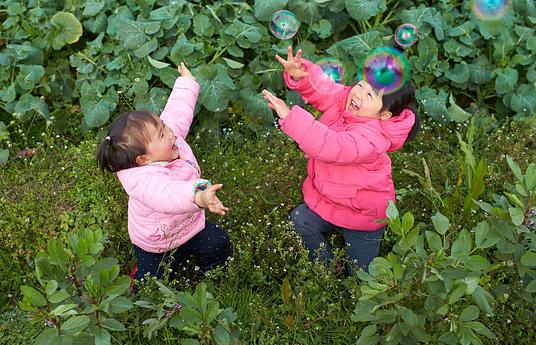Like all of us, educators are on a steep learning curve when it comes to adapting to life during COVID-19. State policymakers vacillate over whether distance learning will count as “school.” Teachers on the frontline with students face novel challenges that stretch their capacity. However, many educators have also expressed optimism about how turning conventional schooling on its head may provide a unique opportunity for us to rethink what school could be. Scaling back accountability measures like standardized testing and seat time requirements that have stifled innovation could spark lasting changes. After all, crisis is the mother of invention.
We at Future School Lab have talked to many educators and innovators over the past few weeks. Here is our advice for schools during this transition:
Connect and Create Community
Relationships drive learning online just as they do in the real world. Work to create connections with, and between, individual students and teachers that collectively form the school community. Students need both formal and informal networks of support. One way to reach all students is through trusted student leaders. One high school teacher noted the difficulty of checking in with each of his 120 students. As a solution, he regularly connects with ten student ambassadors who, in turn, check-in with their broader networks. The students act as his ears on the ground and super-connector “nodes,” bridging formal and informal networks in the community.
Meaningful group work is another way to build community and accountability among students. While teachers may be uncomfortable managing a class of 30 on a hectic conference call, students may be entirely comfortable working in groups of three or four digitally. Teacher-student time can be used to handle small-group issues, both through regularly scheduled meetings and "office hours" when students can drop in casually for extra direction and support.
In the big picture, “school" is nothing more than an opportunity for humans to come together, build community, purpose, and goals (shared and individual), and then support one another to meet them. There is no reason that community, purpose, goals and support cannot translate to the digital world.
Solve for Access and Equity
Creating networks and reaching individual students can help identify barriers to access when it comes to online learning: Which students do not have access to quality internet, a device sufficient to access the online learning platform, or a safe place to study? Solving those individual basic needs is mission-critical for effective distance learning.
Meet Basic Needs First
Students can’t learn if they are worried about having enough to eat, where they will sleep, or whether a sick family member can find care. Schools can’t solve all of these problems themselves, but they can be a point of access for community partners and government agencies and, most importantly, a community support network. It is crucial for us to take advantage of local resources and partnerships in order to meet students’ basic needs and provide essential services such as healthy meals and mental health counseling. Even kids with stable home situations need permission to process what they are seeing, hearing, and feeling during this pandemic. Heather Staker reminds us to #mindthegap and remember Maslow’s hierarchy of needs.
Make it Real for Each Student
Educators should customize and individualize their approaches as much as possible to help each student process the current situation. Striking a balance between giving students assignments that focus on understanding the situation they are in and ways to cope with it will be essential for maintaining a healthy student population. Adjustment will vary not just by age level, but by individual student and family.
Although teachers aren’t likely to get through the curriculums they had planned for the year, there are many rich opportunities for real-world learning in this crisis in just about every discipline. With the relaxation of certain state requirements, these opportunities can be creative, allowing teachers to think outside of the box, be bold, and have fun with their assignments.
Some ideas:
- Create meaningful and customizable learning opportunities by having students work on real-world problems and projects in interdisciplinary teams. Ask Science students to define and conduct experiments that answer questions they have, assign English students persuasive essays arguing for a specific community solution to a current problem, or instruct Math students to plot and predict infections in their home city, county or state. The curriculum and assessment structure from last year may not work, but after all, multi-dimensional collaborative projects more closely mimic the real world than do traditional tests. Let’s take this opportunity to bring that sense of real-world relevance to the virtual classroom and beyond.
- Relevant projects can also help students navigate this complex social and educational landscape themselves. One school serving a large homeless student population has transitioned all academic focus to advocacy: How do you navigate social services to fill your family’s basic needs?
- Focus on integrating social-emotional learning and wellness into… well, everything.
- Use art, particularly in culturally relevant ways, to give students outlets for expression.
Prototype & Iterate
We must recognize that what we roll out week one will change, multiple times. We should embrace a growth mindset and communicate to students, teachers and parents: “We are going to try things that will help us learn.” Start simply and don’t try to solve it all right away.
Implement Feedback Loops
Use simple surveys, polls and online tools now readily available to gather feedback from students, parents and teachers formally and informally. Make sure parents without computer access also have a voice by calling them directly.
Communicate, communicate, communicate
We should keep in touch via email, video webinars, conference calls, etc. in as many languages and modes as possible. Clear, consistent messaging is key: How do we want individuals to engage with us? What are our overarching goals for this process?
Rest and Refuel
This is a marathon, not a sprint. We all need to remember to take care of ourselves along the way. For many of us, this crisis has given us more time to reflect and connect with our immediate families and friends. As Oprah & Deepak Chopra’s popular meditation mantra says, “we are pure potentiality.” The schools students will go back to after this crisis finally ends will be different than the ones they left just a few weeks ago. But, with an emphasis on student-led learning and creative problem solving, “different” might mean “better.”
About the authors:
Vanessa Wilkins, Founder, Future School Lab
Vanessa Wilkins (@futureschoollab) is the founder of Future School Lab, a social impact venture working to accelerate innovation in education. Building on a highly acclaimed education initiative at NIKE and many years working with some of the most respected nonprofits and education companies in the world, Vanessa helps foundations, businesses, and nonprofits support educators to better prepare all students for the future.
Emily Corrigan, Communications Director, Future School Lab
Emily Corrigan is a former Peace Corps volunteer with international teaching, learning, and research experience. At Future School Lab, she contributes her cross-cultural perspective and firsthand experience in order to identify and highlight innovative educational practices from around the globe.
For more articles, innovations & resources, head to our Educator Toolkit especially designed to support educators & parents during this COVID-19 outbreak.


